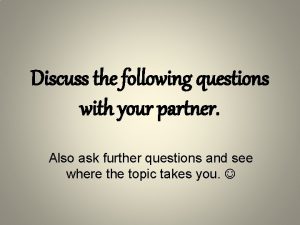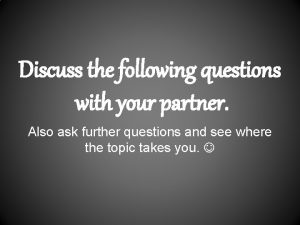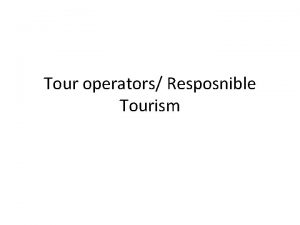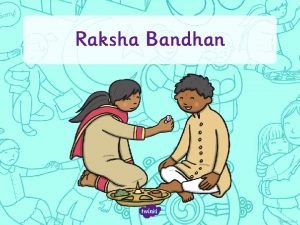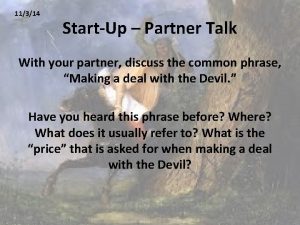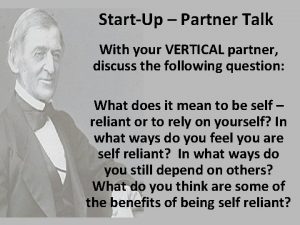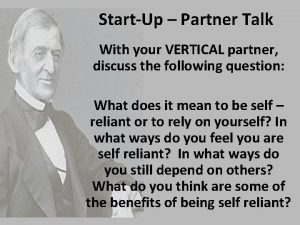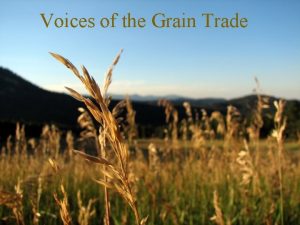Questions to discuss in partner voices Q What








- Slides: 8

Questions to discuss in partner voices! Q: What do you think a joint is? A: A joint is where two bones meet. It can be movable or fixed. Q: Why do you think we have joints? A: If we did not have joints we would find simple tasks like eating very difficult. Any movement needing bending would be impossible!!!!

Where in our body do we find movable joints? Did you locate the joints in our body correctly?

Do you think that these joints all work in the same way? We actually have three main types of movable joints: 1) A hinge joint 2) A ball and socket joint 3) A sliding joint

Hinge joints • Our elbows and knees are hinge joints. • They allow simple movement back and forth.

Your toes use hinge joints (back-and-forth movements like hinges on a door). Elbows, knees and fingers also have these types of joints. Hinge joints are classified as a movable joint.

Ball and socket joints • Our shoulders and hips are ball and socket joints. • This allows movement in several directions.

The hips and shoulders contain ball-and-socket joints In a ball-and-socket joint, one bone has a rounded end that fits into a cuplike cavity on another bone. This provides a wider range of movement. Thus, your hips and shoulders can swing in almost any direction.

• Sliding joints – like the ankle and wrist, allow for a little bit of movement at the joint. • Fixed joints are where the bones are joined and do not move, like the bones in our skull. joints
 Discuss these questions with a partener
Discuss these questions with a partener Discuss the following questions with a partner.
Discuss the following questions with a partner. Discuss these questions with your partner
Discuss these questions with your partner Discuss these questions with a partner
Discuss these questions with a partner Amateurs talk tactics professionals talk logistics
Amateurs talk tactics professionals talk logistics Poems for two voices
Poems for two voices Men's voices ireland
Men's voices ireland Voices from the dust bowl
Voices from the dust bowl Hark ten thousand voices crying
Hark ten thousand voices crying
